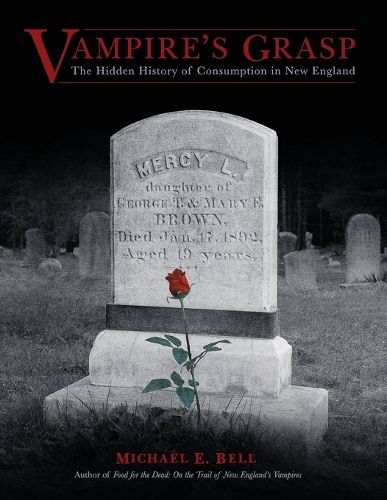Readings Newsletter
Become a Readings Member to make your shopping experience even easier.
Sign in or sign up for free!
You’re not far away from qualifying for FREE standard shipping within Australia
You’ve qualified for FREE standard shipping within Australia
The cart is loading…






This title is printed to order. This book may have been self-published. If so, we cannot guarantee the quality of the content. In the main most books will have gone through the editing process however some may not. We therefore suggest that you be aware of this before ordering this book. If in doubt check either the author or publisher’s details as we are unable to accept any returns unless they are faulty. Please contact us if you have any questions.
The story of New England's vampires begins with a scourge whose tragic trail is visible in cemeteries throughout the region. Incredible as it may seem to contemporary Americans, vampires preyed upon their not-so-distant ancestors. Vampire attacks increased dramatically during the eighteenth century and remained the leading cause of death in New England throughout the nineteenth century. But this unseen killer did not resemble the clever Count Dracula of Bram Stoker's imagination. Indeed, it was so small that it was undetectable. New England's authentic vampires, you see, were pathogenic microbes ("bacteria with fangs," as a nurse once described them). Prior to the twentieth century, a diagnosis of consumption (as pulmonary tuberculosis was called at that time) was a virtual death sentence. As the coronavirus crisis was firmly grabbing the world's attention in 2020, it struck me that if Americans in the early nineteenth century had somehow discerned the benefits of distancing, wearing a mask, and getting vaccinated, they might have stemmed the spread of pulmonary tuberculosis and I could not have written this book. Unfortunately, as I described that era of consumption in my first book on this topic, Food for the Dead: On the Trail of New England's Vampires (2001), the science that might have generated an effective strategy for flattening the curve of the consumption epidemic did not exist until after 1882, the year that Robert Koch proved that tuberculosis was a bacterial infection. By that time, most of the tragic events examined in this book had already occurred.
$9.00 standard shipping within Australia
FREE standard shipping within Australia for orders over $100.00
Express & International shipping calculated at checkout
This title is printed to order. This book may have been self-published. If so, we cannot guarantee the quality of the content. In the main most books will have gone through the editing process however some may not. We therefore suggest that you be aware of this before ordering this book. If in doubt check either the author or publisher’s details as we are unable to accept any returns unless they are faulty. Please contact us if you have any questions.
The story of New England's vampires begins with a scourge whose tragic trail is visible in cemeteries throughout the region. Incredible as it may seem to contemporary Americans, vampires preyed upon their not-so-distant ancestors. Vampire attacks increased dramatically during the eighteenth century and remained the leading cause of death in New England throughout the nineteenth century. But this unseen killer did not resemble the clever Count Dracula of Bram Stoker's imagination. Indeed, it was so small that it was undetectable. New England's authentic vampires, you see, were pathogenic microbes ("bacteria with fangs," as a nurse once described them). Prior to the twentieth century, a diagnosis of consumption (as pulmonary tuberculosis was called at that time) was a virtual death sentence. As the coronavirus crisis was firmly grabbing the world's attention in 2020, it struck me that if Americans in the early nineteenth century had somehow discerned the benefits of distancing, wearing a mask, and getting vaccinated, they might have stemmed the spread of pulmonary tuberculosis and I could not have written this book. Unfortunately, as I described that era of consumption in my first book on this topic, Food for the Dead: On the Trail of New England's Vampires (2001), the science that might have generated an effective strategy for flattening the curve of the consumption epidemic did not exist until after 1882, the year that Robert Koch proved that tuberculosis was a bacterial infection. By that time, most of the tragic events examined in this book had already occurred.